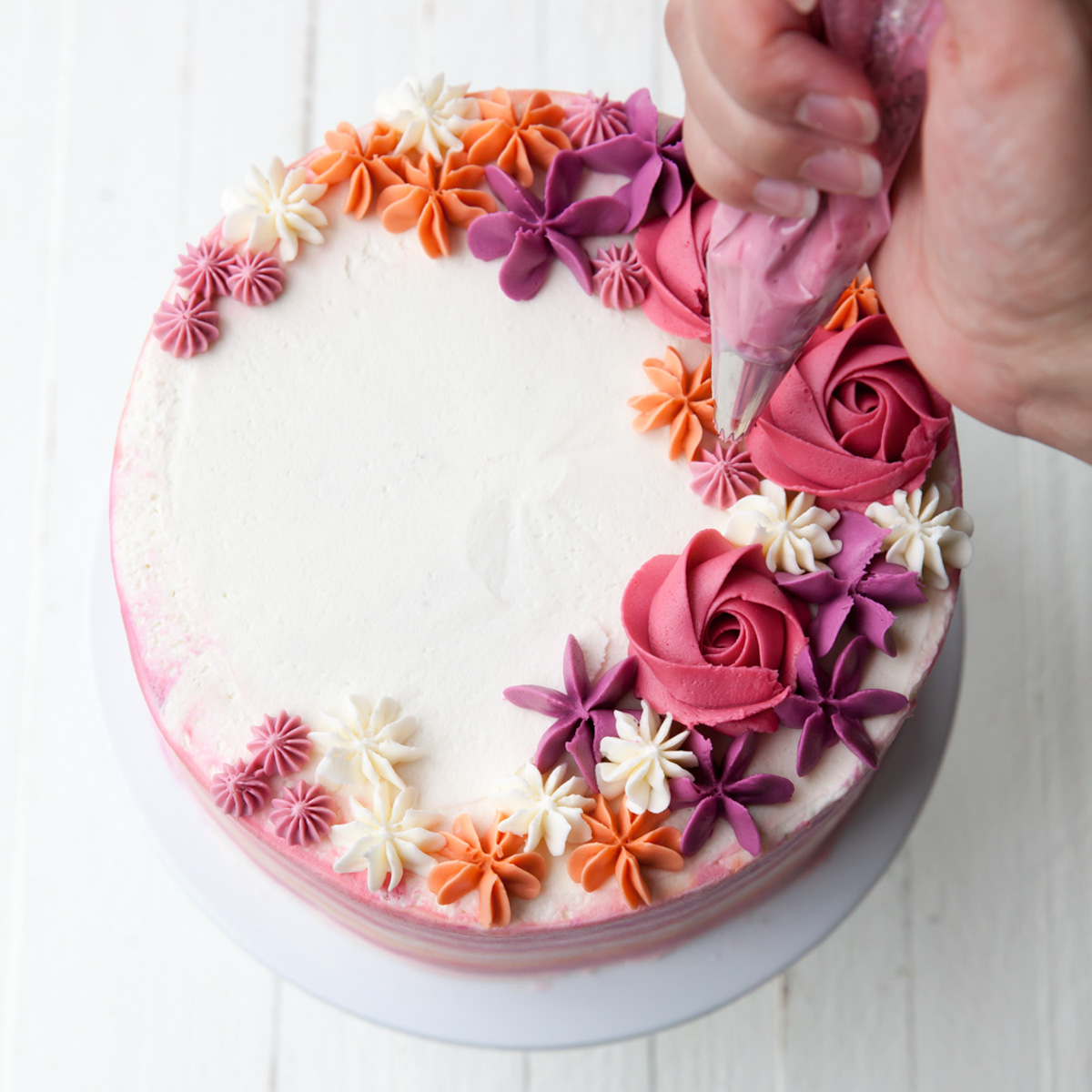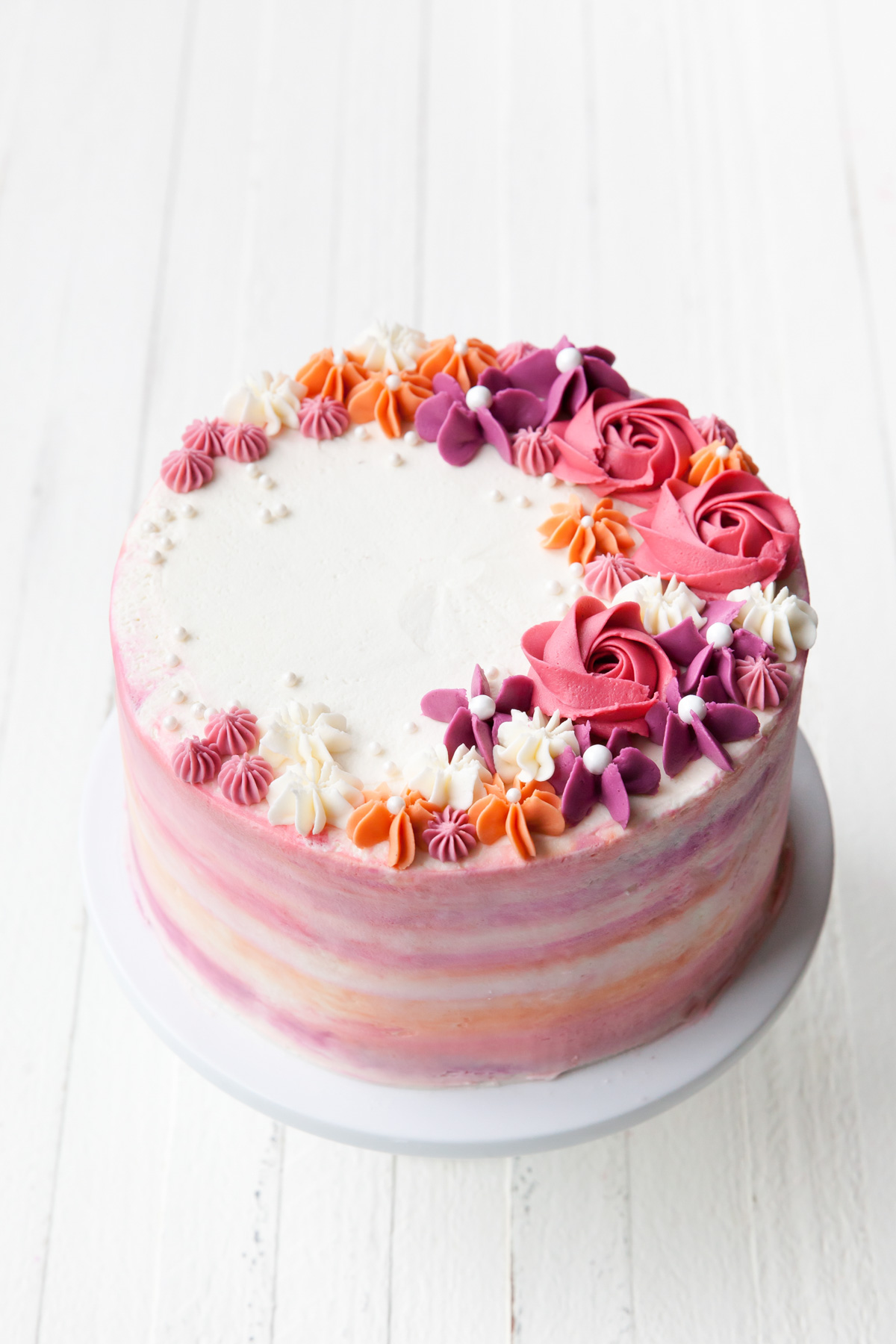Welcome to the world of cake decorating! If you’re looking to elevate your baking skills, specifically in creating stunning floral designs, you’re in the right place. As a passionate cake decorator with years of experience, I hope to share some valuable tips, tricks, and insights that will make your flower decorations shine. Whether you’re a beginner or looking to refine your techniques, this guide is tailored just for you!
Understanding Cake Decorating Flowers
Flowers are a delightful addition to cakes, bringing color, elegance, and a personal touch. Understanding the different types of cake decorating flowers can help you choose the right ones for your cake design. Below, I’ll discuss the major types of flowers and their uses.
Types of Cake Decorating Flowers
- Fresh Flowers: Ideal for rustic cakes and special occasions, but make sure they are food-safe.
- Buttercream Flowers: Easy to make using decorating tips, perfect for customizing shapes and colors.
- Fondant Flowers: Can be more time-consuming, but they allow for intricate designs and are long-lasting.
- Gumpaste Flowers: These have a hard finish, allowing for delicate and realistic looks.
Essential Tools for Flower Decorating
To create beautiful floral designs, having the right tools is essential. Below is a list of my go-to tools that I believe every cake decorator should have.
Must-Have Tools
| Tool | Purpose | Pros | Cons |
|---|---|---|---|
| Piping Bags | For creating buttercream flowers | Easy to use, versatile | Can be messy if overfilled |
| Piping Tips | To create different flower patterns | Variety of designs | Can be hard to clean |
| Flower Nail | To assist in making 3D flowers | Provides stability | Requires practice |
| Rolling Pin | For rolling out fondant and gumpaste | Smooths dough evenly | Needs space to work |

Creating Buttercream Flowers: Step-by-Step Guide
Buttercream flowers are one of the easiest and most colorful ways to decorate cakes. Here’s how to create some basic buttercream flowers:
Materials Needed
- Buttercream frosting (your preferred recipe)
- Piping bags with various tips (like Wilton 1M, 104, and 352)
- Spatula and scraper
- Flower nail (for 3D flowers)
- Gel food colors

Basic Buttercream Flower Techniques
Here are a few common flower techniques:
Roses
Using the Wilton 1M tip, start in the center and swirl outward to create petals. Keep the pressure even for uniform petals.

Daisies
Use the Wilton 104 tip; squeeze and pull outward for petals while keeping the tip at an angle.
Sunflowers
For sunflowers, use the Wilton 352 tip and create the petals by pulling the buttercream around in a circular motion.

Fondant Flowers: A More Advanced Approach
Fondant flowers require more skill but offer endless possibilities for decoration. Here are my tips for mastering fondant flowers.
Working with Fondant
- Use a cornstarch dusting to prevent sticking while rolling.
- Color your fondant with gel food coloring for vibrant shades.
- Use floral wire to create structure for your flowers.

Common Fondant Flowers
- Calla Lilies: Simple cone shape that can be made with fondant and a bit of shaping.
- Orchids: Can be more complex; use a petal cutter for the right shape.
- Peonies: Layer several petals for a full, lush look.
Gumpaste Flowers: Tips for Durability and Realism
Gumpaste allows for the creation of delicate and realistic flowers. Here’s how to use it effectively:

Creating Gumpaste Flowers
- Mix gumpaste with a little tylose powder for extra strength.
- Roll very thin for petals and leaves to create a realistic appearance.
- Use veining tools to add realistic details to your petals.
Common Mistakes to Avoid When Decorating Flowers
Even experienced decorators make mistakes. Here are some common pitfalls and how to avoid them:

Top Mistakes
- Using Too Cold Buttercream: It can be challenging to pipe with and may lead to poor results.
- Not Practicing Enough: Flowers take practice; don’t give up after a few tries!
- Overloading Piping Bags: Less is more; overloading can cause fatigue and messy results.
Color Theory for Flower Decorations
Understanding color theory can enhance your design choices. Here’s a quick rundown:
Basic Color Combinations
- Complementary Colors: Opposite colors on the wheel (e.g., blue and orange) create a vibrant contrast.
- Analogous Colors: Colors next to each other (e.g., blue, green, and teal) offer a harmonious look.
- Monochromatic Colors: Variations of a single color for a subtle, elegant effect.
Final Touches: Adding Details
The small details can make a big difference in the appearance of your flower decorations. Here are some final touches you can consider:
Edible Glitter and Dust
Using edible luster dust or glitter can add sparkle and dimension to your flowers. Apply lightly with a brush for a magical effect!
Leaf Placement
Adding leaves around your flowers can help balance your design. Use green fondant or buttercream, shaping leaves with a knife or leaf-shaped cutters.
Frequently Asked Questions (FAQs)
What are the best flowers to use on cakes?
Common choices include roses, sunflowers, daisies, and edible flowers. Ensure they are safe for consumption!
Can I use fresh flowers on a cake?
Yes, but make sure they are pesticide-free and safe for food use. It’s essential to wrap the stems in florist tape to prevent direct contact with the cake.
How far in advance can I make fondant flowers?
You can make fondant flowers several days to even weeks in advance as they dry hard and can be stored in a cool, dry place.
Why does my buttercream melt while working with it?
Buttercream can melt due to heat from your hands or environment. Keep your workspace cool, and consider refrigerating your buttercream if it becomes too soft.
Conclusion
Decorating cakes with flowers can be a rewarding and creative outlet. By mastering the tips and techniques outlined in this guide, you’ll be well on your way to creating beautiful, professional-looking cake decorations. Practice, experiment with colors, and don’t be afraid to make mistakes along the way. Happy decorating!